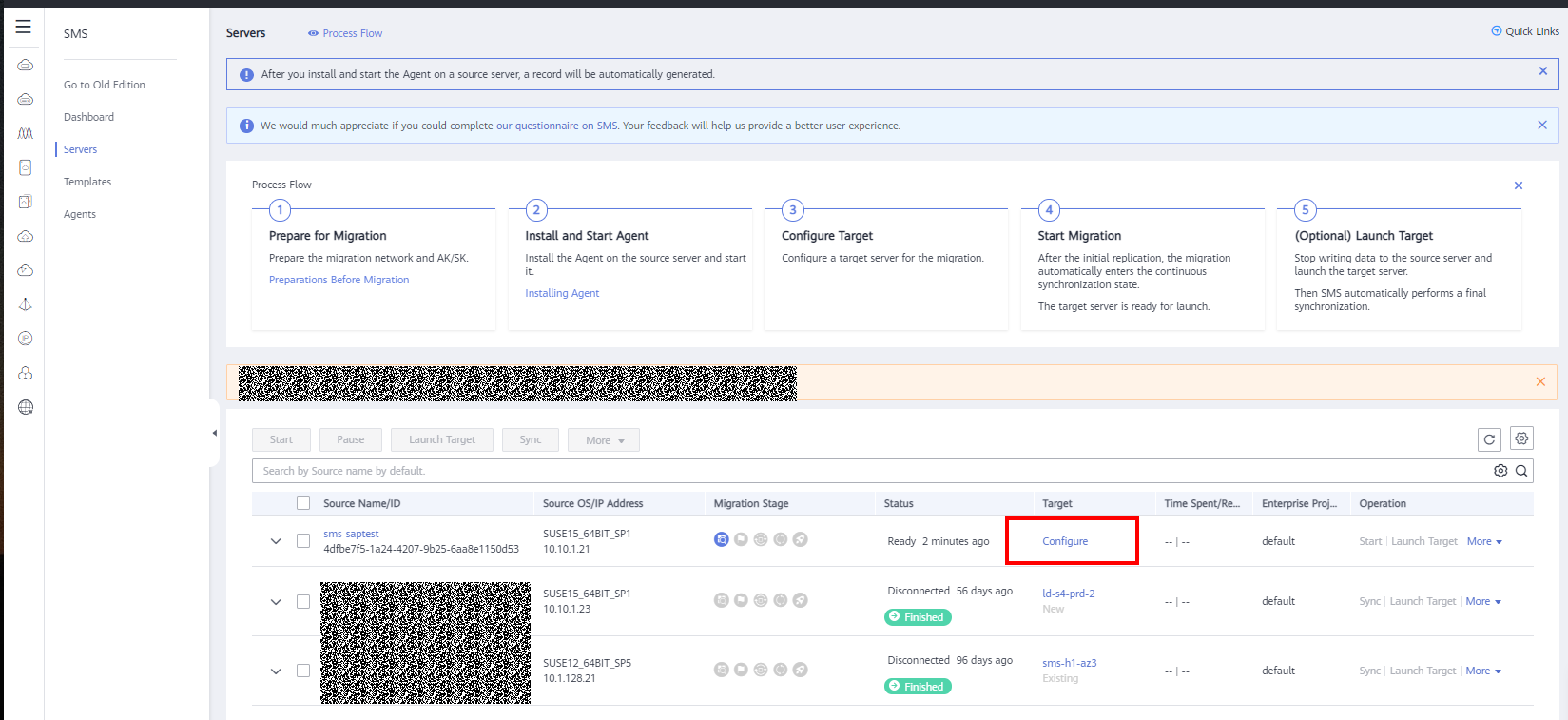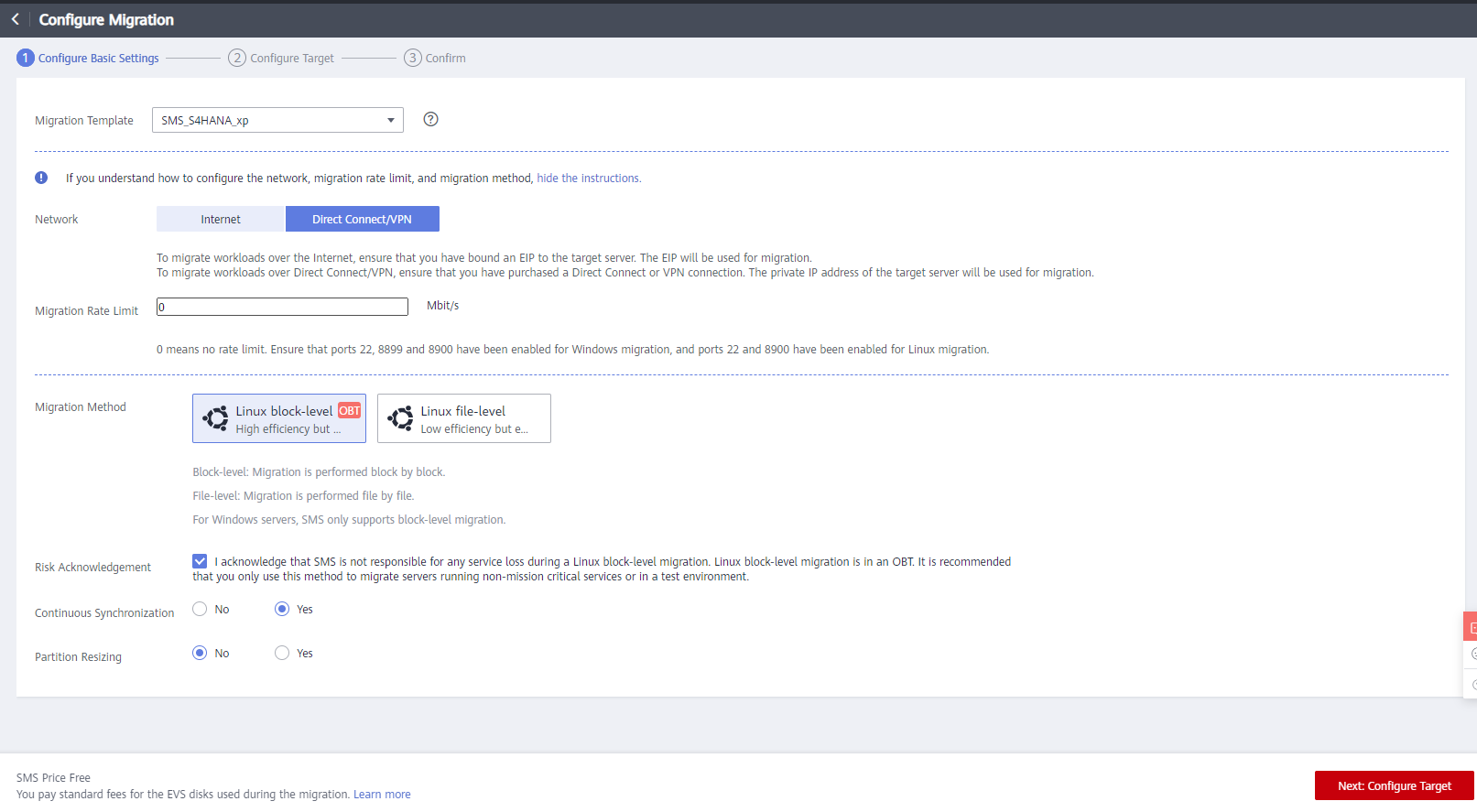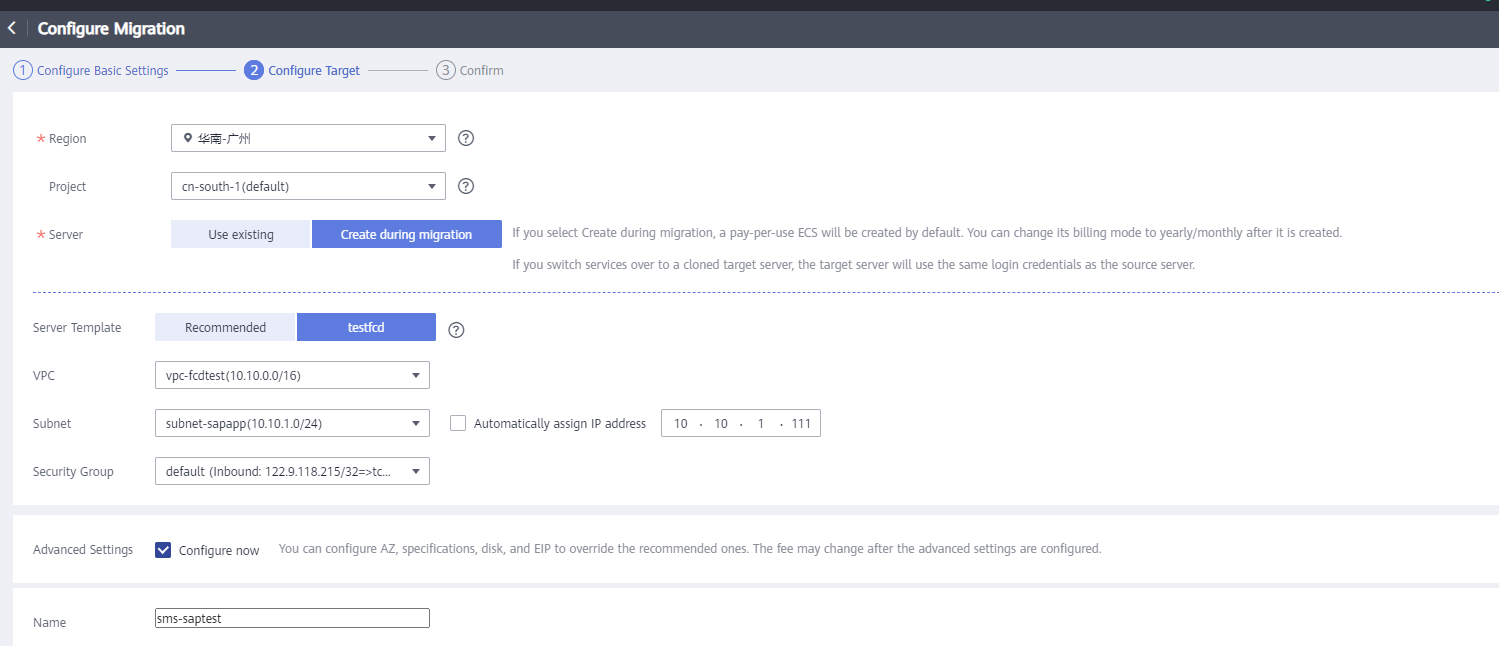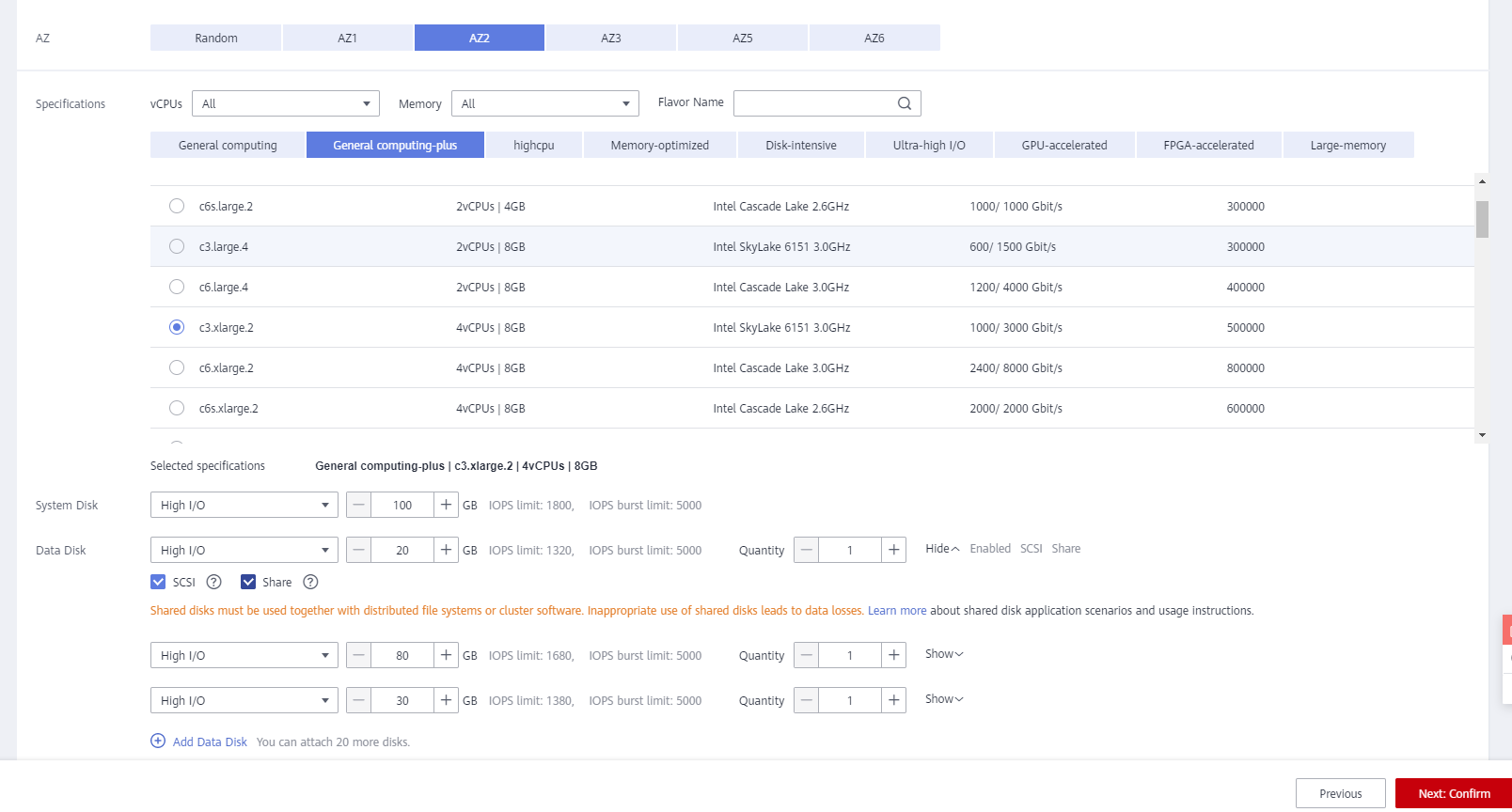Configuring the Destination Server
Before the migration, you need to configure the destination server. The destination server is used to receive data from the source server. You can also use the it for migration test and launch the destination server. The destination server can be configured only after all migration items on the source server are checked and confirmed OK.
- Log in to the SMS management console and choose Servers in the left navigation pane. On the server list page, click the server to be migrated to go to the server details page. Select the Source Server Details tab to view check result for the migration items on the source server. You can perform the following steps only after all migration items are checked and confirmed OK. If there are some items found to be abnormal, locate the cause and rectify it on the current page.

- Locate the server to be migrated and click Configure to configure the destination server.

- Configure basic settings as required. Select Continuous Synchronization and click Next: Configure Target.

- Select Create during migration or Use existing for Server, configure whether to create shared disks, and select the VPC and disk specifications based on the site requirements. Click Next: Confirm.

 Parameter description
Parameter descriptionName
Description
Example Value
Region
Select the region where the destination ECS is located.
By default, the region is the one set for the current migration project, but you can select another region if needed.
CN East-Shanghai2
Migration Method
- Linux block-level: Migration is performed block by block. This method has high efficiency but poor compatibility.
- Linux file-level: Migration is performed file by file. This method has low efficiency but excellent compatibility.
- Windows block-level: Migration is performed block by block. For Windows servers, SMS only supports block-level migration. This method has high efficiency.
Linux block-level
Network
- Internet: If you select this option, an elastic IP address must be assigned on the target ECS. Network is set to Internet by default.
- Direct Connect/VPN: You need to create a Direct Connect or VPN connection between the source server and the VPC subnet where the target server is located in advance.
- Migration Rate Limit: You can set the rate limits as needed based on the bandwidth size of the source server and service requirements.
NOTE:If the source and destination servers are in the same VPC, set Network to Direct Connect/VPN.
Configure it based on the site requirements.
Direct Connect/VPN
Whether to perform a continuous synchronization after the full replication is complete.
- If you select No, after the full replication, SMS will not perform a continuous synchronization and will automatically start the target ECS. To synchronize incremental data, click Start in the Operation column.
- If you select Yes, after the full replication, SMS will perform a continuous synchronization. To complete the migration, you need to manually launch or clone the target ECS.
Yes
Server
- Use existing
- Create during migration
Use existing
- Ensure that all parameters have been configured based on the site requirements and click Save.

Feedback
Was this page helpful?
Provide feedbackThank you very much for your feedback. We will continue working to improve the documentation.See the reply and handling status in My Cloud VOC.
For any further questions, feel free to contact us through the chatbot.
Chatbot





